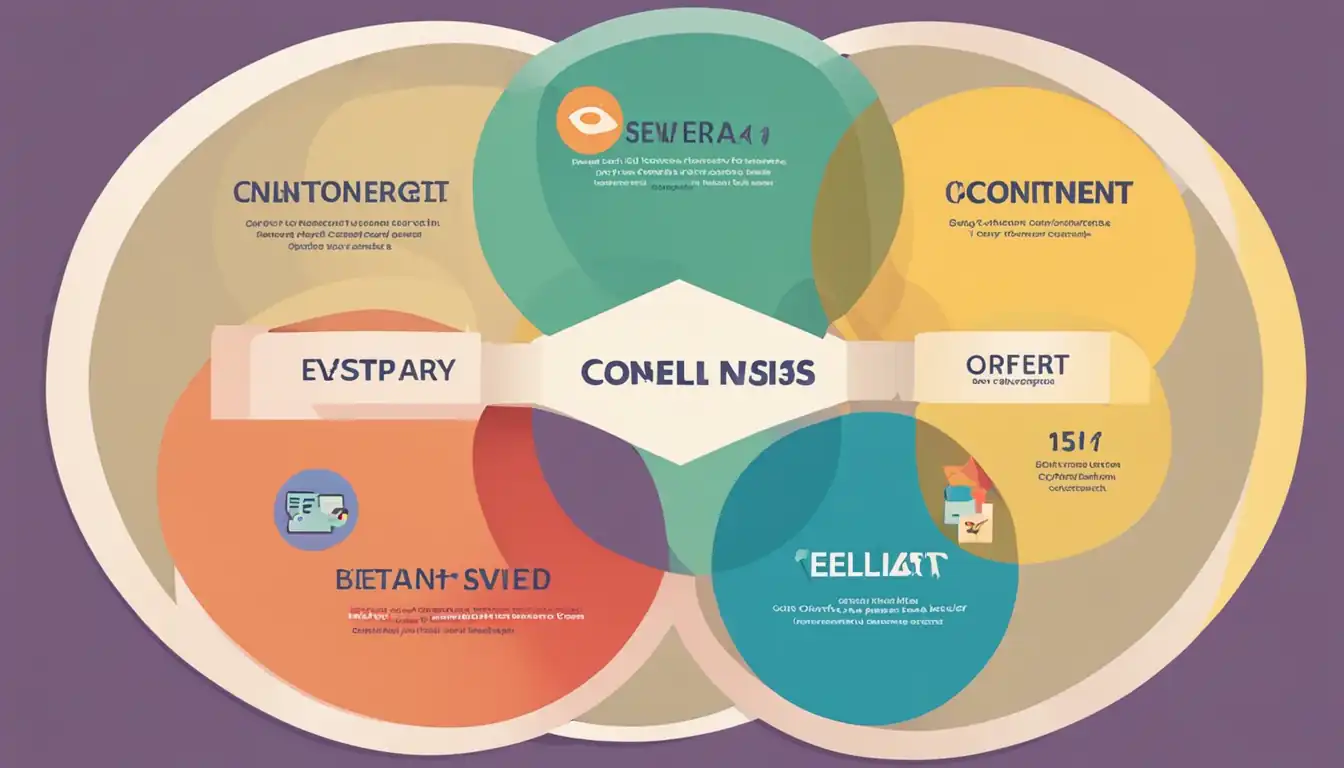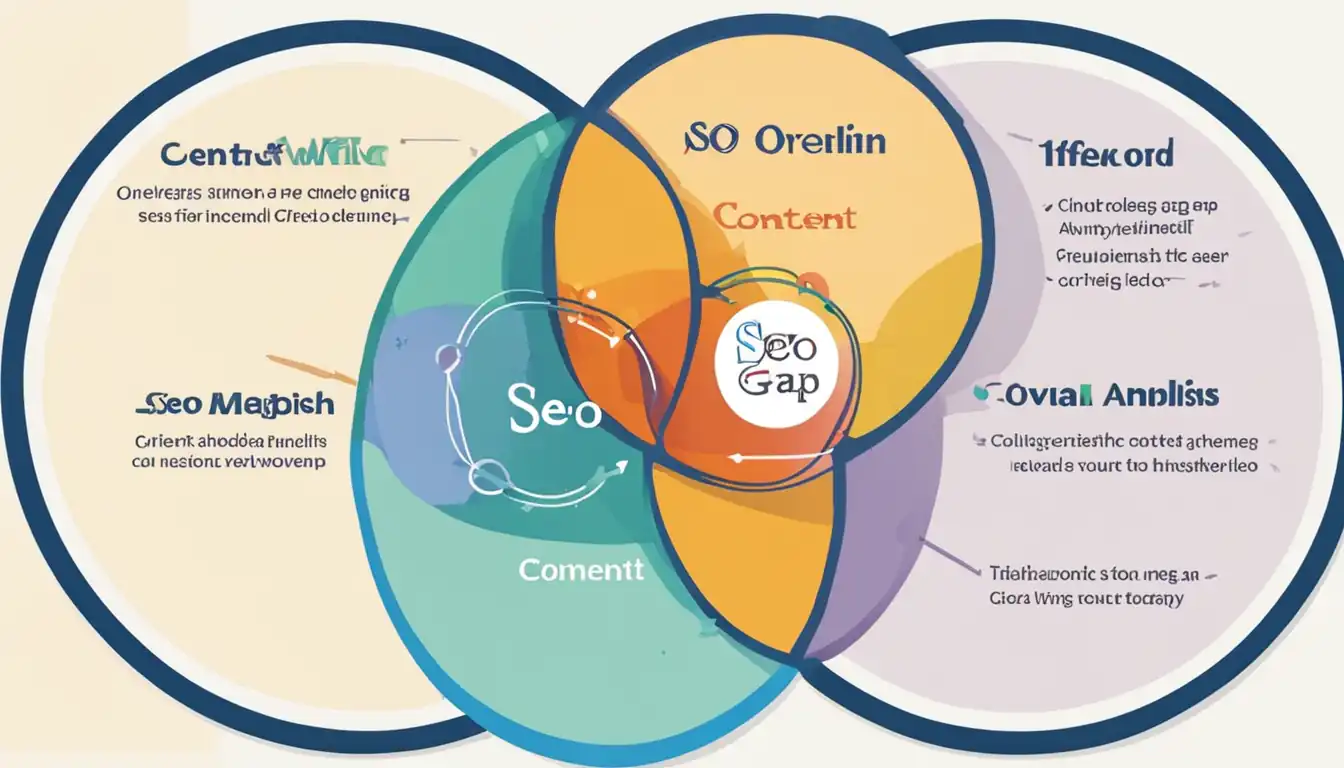Content Gap Analysis for SEO

Content Gap Analysis is a vital component of any successful SEO strategy. By identifying the missing pieces in your content puzzle, you can optimize your website for better search engine rankings and user engagement. In this post, we will delve into the world of Content Gap Analysis, exploring its importance, initial steps, tools and techniques, competitor analysis, strategies for bridging the gap, and monitoring results for continuous improvement.
Understanding Content Gap Analysis

What is Content Gap Analysis?
Content gap analysis is a strategic method used in SEO to identify opportunities for creating new content that fills the gaps in existing content on a website. By analyzing the keywords and topics that competitors are ranking for but your site is not, you can uncover valuable insights to improve your SEO performance.
Why It's Crucial for SEO Success
1. Identifying Untapped Opportunities: Content gap analysis helps you discover keywords and topics that your competitors are ranking for, but you are not. This allows you to create targeted content to fill those gaps and attract more organic traffic to your site.
2. Improving Relevance and Authority: By addressing content gaps, you can enhance the relevance of your website to search engines and users. This can lead to improved rankings and increased authority within your industry.
3. Enhancing User Experience: Creating content that addresses the needs and interests of your target audience can result in a better user experience. This can lead to higher engagement metrics, such as longer time on site and lower bounce rates.
4. Staying Ahead of the Competition: Regularly conducting content gap analysis allows you to stay informed about the latest trends and topics in your industry. By filling these gaps before your competitors do, you can maintain a competitive edge in the search results.
5. Driving Conversions: Targeting specific keywords through content gap analysis can help drive qualified traffic to your site. By creating high-quality, relevant content that addresses user intent, you increase the likelihood of converting visitors into customers or leads.
In conclusion, content gap analysis is an essential component of any successful SEO strategy. By identifying opportunities for creating new, relevant content that fills gaps in existing coverage, you can improve your search engine rankings, attract more organic traffic, and ultimately drive conversions on your website.
The Initial Steps to Conducting a Content Gap Analysis
Identifying Your Target Audience and Their Needs
Before diving into a content gap analysis for SEO, it is crucial to first identify your target audience and understand their needs. This involves researching demographics, interests, pain points, and preferences of your audience. By gaining a deep understanding of who your audience is and what they are looking for, you can tailor your content strategy to meet their specific needs.
Analyzing Your Current Content Inventory
Once you have a clear picture of your target audience, the next step is to analyze your current content inventory. This involves taking stock of all the content assets you have on your website and other platforms. By conducting a thorough audit of your existing content, you can identify gaps in topics, formats, or keywords that are not being adequately covered. This analysis will help you determine where there are opportunities to create new content that fills these gaps and better serves your audience's needs.
Tools and Techniques for Effective Analysis

Popular Tools Used in the Industry
When it comes to conducting a content gap analysis for SEO, there are several popular tools that professionals rely on to gather data and insights. These tools help in identifying gaps in content strategy and provide valuable information for optimizing website performance. Some of the popular tools used in the industry include:
Ahrefs: A comprehensive SEO tool that offers features like site audits, keyword research, and backlink analysis. Ahrefs can be used to identify content gaps by analyzing competitor websites and finding keywords they are ranking for but you are not.
SEMrush: Another powerful tool that provides competitive intelligence and keyword research capabilities. SEMrush can help identify content gaps by comparing your website's performance with competitors and suggesting relevant keywords to target.
Moz: Known for its Moz Pro toolset, Moz offers features like site audits, rank tracking, and link analysis. By using Moz, you can conduct a thorough content gap analysis by evaluating your website's performance against industry benchmarks.
Manual Techniques for Deeper Insights
In addition to using popular tools, manual techniques can also be employed for a more in-depth content gap analysis. These techniques involve a hands-on approach to reviewing website content and identifying areas of improvement. Some manual techniques for deeper insights include:
- Content Audit: Conducting a thorough audit of existing content on the website to identify gaps in topics covered or outdated information.
- Competitor Analysis: Analyzing competitor websites to understand their content strategy and identify opportunities where your website can fill the gaps.
- Keyword Research: Performing detailed keyword research to uncover search terms that are relevant to your industry but not currently targeted on your website.
- User Feedback: Gathering feedback from users through surveys or interviews to understand their needs and preferences when it comes to content.
By combining the use of popular tools with manual techniques, businesses can gain a comprehensive understanding of their content landscape and develop strategies to bridge any existing gaps effectively.
Analyzing Competitor Strategies
When conducting a content gap analysis for SEO, it is crucial to analyze your competitors' strategies. By understanding what they are doing well and where they may be falling short, you can identify opportunities to improve your own content and ultimately outrank them in search engine results.
How to Identify Your Competitors' Strengths
- Keyword Analysis: Start by identifying the keywords that your competitors are ranking for. Tools like SEMrush or Ahrefs can help you uncover this information.
- Content Quality: Evaluate the quality of your competitors' content. Look at factors such as readability, depth of information, and engagement metrics like time on page.
- Backlink Profile: Analyze the backlinks pointing to your competitors' websites. High-quality backlinks from authoritative sites can indicate strong SEO strategies.
- Social Media Presence: Take note of how active and engaged your competitors are on social media platforms. A strong social media presence can contribute to overall visibility and brand authority.
Learning from Competitors' Weaknesses
- Content Gaps: Identify topics or keywords that your competitors have not covered in their content strategy. This presents an opportunity for you to create valuable, unique content that fills these gaps.
- Technical SEO Issues: Pay attention to any technical SEO issues that may be affecting your competitors' rankings, such as slow page speed or broken links.
- Lack of Multimedia: If your competitors are lacking multimedia elements like images, videos, or infographics in their content, consider incorporating these into your own strategy for a more engaging user experience.
- Inconsistent Publishing Schedule: Consistency is key in SEO, so if you notice that your competitors are not regularly publishing new content, use this as an opportunity to establish a more consistent schedule for yourself.
By thoroughly analyzing both the strengths and weaknesses of your competitors' strategies, you can gain valuable insights that will inform and enhance your own content strategy for better SEO performance.
Bridging the Gap
Content gap analysis is a crucial aspect of SEO strategy that involves identifying areas where your content is lacking or could be improved. By conducting a thorough analysis, you can uncover opportunities to create new content that will attract more organic traffic and improve your search engine rankings.
Strategies to Fill Content Gaps
When it comes to filling content gaps, there are several strategies you can employ:
Keyword Research: Conduct keyword research to identify relevant keywords that are not currently being targeted in your existing content. By incorporating these keywords into new content, you can attract more organic traffic from users searching for those specific terms.
Competitor Analysis: Analyze the content of your competitors to identify topics or keywords that they are ranking for but you are not. This can help you uncover gaps in your own content strategy and create new content to compete with them.
Content Audit: Conduct a thorough audit of your existing content to identify areas where it may be lacking in depth or relevance. By updating or expanding on existing content, you can fill gaps and improve the overall quality of your website.
User Intent Analysis: Consider the intent behind user searches and tailor your content to meet those needs. By understanding what users are looking for, you can create targeted content that addresses their questions or concerns.
Creating a Roadmap for Content Development
To effectively fill content gaps and improve your SEO strategy, it is important to create a roadmap for content development:
- Set Goals: Define clear goals for your content strategy, such as increasing organic traffic or improving search engine rankings.
- Prioritize Topics: Identify high-priority topics based on keyword research, competitor analysis, and user intent.
- Create a Content Calendar: Develop a schedule for creating and publishing new content to ensure consistency and keep track of progress.
- Monitor Performance: Regularly monitor the performance of new content using analytics tools to measure its impact on organic traffic and search rankings.
- Iterate and Improve: Continuously review and update your content strategy based on performance data and feedback from users to ensure ongoing success in filling content gaps.
By implementing these strategies and creating a structured roadmap for content development, you can effectively bridge the gap in your SEO strategy and drive more organic traffic to your website.
Monitoring Results and Adjusting Strategies

Monitoring the results of your content gap analysis is crucial to ensure that your SEO strategies are effective. By regularly tracking key performance indicators and adapting your approach based on analytics data, you can optimize your content to fill gaps and improve search engine rankings.
Key Performance Indicators to Watch
When monitoring the results of your content gap analysis, there are several key performance indicators (KPIs) that you should pay close attention to:
Organic Traffic: Monitor the amount of organic traffic coming to your website from search engines. An increase in organic traffic indicates that your SEO efforts are paying off.
Keyword Rankings: Keep track of how well your target keywords are ranking in search engine results pages (SERPs). Improvements in keyword rankings show that your content is relevant and optimized.
Bounce Rate: Analyze the bounce rate of pages on your website. A high bounce rate may indicate that visitors are not finding what they are looking for, highlighting potential content gaps.
Time on Page: Measure the average time visitors spend on each page. Longer time on page metrics suggest that users find your content engaging and valuable.
Adapting Your Strategy Based on Analytics Data
Once you have gathered data from key performance indicators, it is essential to adapt your SEO strategy accordingly. Here are some ways you can adjust your approach based on analytics data:
"Analyzing the data from key performance indicators allows you to identify areas for improvement and make informed decisions about optimizing your content."
Content Updates: Use analytics data to identify underperforming pages and update them with fresh, relevant content. This can help fill content gaps and improve search visibility.
Keyword Optimization: Adjust keyword targeting based on ranking fluctuations and search trends. Incorporating new keywords or refining existing ones can enhance the relevance of your content.
Link Building: Identify opportunities to build quality backlinks by analyzing referral traffic and competitor link profiles. Building a strong backlink profile can boost SEO performance.
By continuously monitoring results and adjusting strategies based on analytics data, you can effectively fill content gaps and drive organic traffic to your website.
Conclusion
In conclusion, mastering Content Gap Analysis is key to staying ahead in the ever-evolving world of SEO. By understanding your target audience's needs, analyzing your current content inventory, studying competitor strategies, and implementing effective gap-filling strategies, you can elevate your website's visibility and relevance in search engine results. Remember to monitor key performance indicators and adapt your strategy based on analytics data to ensure long-term success in driving organic traffic to your site.